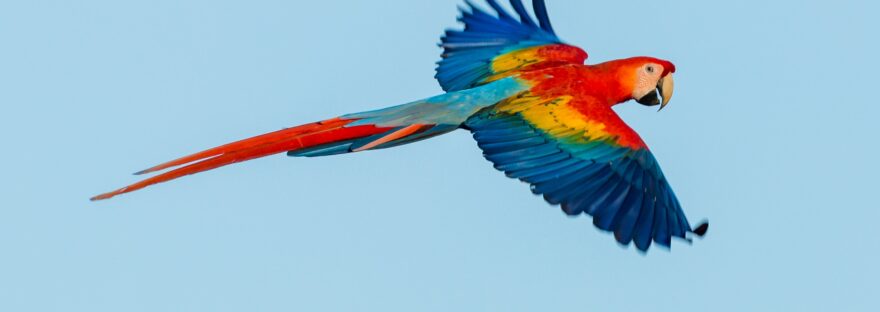What is CITES
- CITES is a multilateral treaty to protect endangered plants and animals which came into force in 1975. It forms a framework on which national legislation is based. CITES works by subjecting the trade in specimens of selected species to certain controls and licenses, which in the U.K. are managed by APHA (the Animal Plant and Health Agency).
- Plants and animals on the CITES register are grouped into three appendices based on their endangered status, with Appendix 1 being those which are at the highest risk of extinction. Legislation exists to protect these species, and applies to species in their natural environment and those bred in captivity.
Cites Regulations
- There are strict regulations around the trade of endangered species and this includes several species which are commonly breed and owned by people in the UK, such as African Greys and Scarlet Macaws. See below for a full list of parrots on the cites 1 appendix.
- You must apply for a permit or certificate to import, export or re-export any animal or plant species, and their parts or derivatives, that are on the CITES list. This includes if you move CITES specimens between Great Britain (England, Scotland and Wales) and the EU, and Great Britain and Northern Ireland (NI).
- To sell a parrot listed on the CITES 1 appendix, you must have a Specimen Specific Certificate or apply for a Transaction Specific Certificate – even if that sale means the bird remains in the same country. More information here.
It is a criminal offence to use commercially
- any specimen listed under annex A of the CITES list without a valid certificate
- any specimen listed in annex B that has been imported illegally
You could get a prison sentence of up to 5 years or an unlimited fine.
CITES and Birdline
- Current advice from APHA states that Birdline must apply for A10 certificates if we charge a foster fee for any birds who species are listed on the CITES 1 appendix. However, we do not believe that this should be required for a number of reasons, and have written to APHA to challenge this instruction.
- In the meantime, where we have to apply for A10 certificates, we must unfortunately pass this cost onto the fosterer.
CITES 1 – Parrot list
| Common Name | DATE ADDED TO CITES 1 |
| Goffin Cockatoo | 14/12/2019 |
| Red Vented Cockaoo | 11/06/1992 |
| Salmon-crested Cockatoo, Moluccan Cockatoo | 18/01/1990 |
| Lesser Sulpher Crested | 12/01/2005 |
| Palm Cockatoo | 22/10/1987 |
| Red-and-blue Lory | 16/02/1995 |
| Ultramarine Lory, Ultramarine Lorikeet | 18/09/1997 |
| Jacquot, Red-necked Parrot, Red-necked Amazon | 06/06/1981 |
| Yellow-naped Amazon, Yellow-naped Parrot | 13/02/2003 |
| Yellow-shouldered Amazon, Yellow-shouldered Parrot | 06/06/1981 |
| Red-tailed Amazon, Red-tailed Parrot | 06/06/1981 |
| Lilac-crowned Parrot, Lilac-crowned Amazon | 12/01/2005 |
| Saint Vincent Amazon, St. vincent parrot, | 01/07/1975 |
| Imperial Parrot, Imperial Amazon | 01/07/1975 |
| Caribbean Amazon, Cuban Amazon, Cuban Parrot, Bahamas Parrot | 01/07/1975 |
| Yellow-headed Parrot, Yellow-headed Amazon | 13/02/2003 |
| Red-spectacled Amazon, Red-spectacled Parrot | 01/07/1975 |
| Red-browed Parrot, Red-topped Amazon, Red-browed Amazon, Red-topped Parrot | 01/07/1975 |
| Alder Parrot, Tucuman Parrot, Tucuman Amazon | 18/01/1990 |
| St. lucia amazon, Saint Lucia Parrot | 01/07/1975 |
| Vinaceous-breasted parrot / Amazon | 01/07/1975 |
| Green-cheeked Parrot, Green-cheeked Amazon, Red-crowned Parrot, Red-crowned Amazon | 18/09/1997 |
| Puerto Rican Parrot, Puerto Rican Amazon, Red-fronted Amazon | 01/07/1975 |
| Glaucous Macaw | 22/10/1987 |
| Hyacinth Macaw | 22/10/1987 |
| Indigo Macaw, Lear’s Macaw | 22/10/1987 |
| Buffon’s Macaw, Great Green Macaw | 01/08/1985 |
| Blue-throated Macaw | 29/07/1983 |
| Scarlet Macaw | 01/08/1985 |
| Military Macaw | 22/10/1987 |
| Red-fronted Macaw | 29/07/1983 |
| Little Blue Macaw, Spix’s Macaw | 01/07/1975 |
| Norfolk Parakeet, Norfolk Island Parakeet | 04/02/1977 |
| Forbes’s Parakeet, Chatham Island Yellow-fronted Parakeet, | 01/07/1975 |
| New Zealand Parakeet, Red-crowned Parakeet, Red-fronted Kakariki | 04/02/1977 |
| Red-crowned Parakeet | 04/02/1977 |
| Coxen’s Blue-browed Fig Parrot, Coxen’s Double-eyed Fig-Parrot, | 06/06/1981 |
| Horned Parakeet | 19/07/2000 |
| Golden Conure, Queen of Bavaria’s Conure, Golden Parakeet | 01/07/1975 |
| Orange-bellied Parrot, Orange-bellied Parakeet | 01/07/1975 |
| Yellow-eared Parrot, Yellow-eared Conure | 29/07/1983 |
| Night Parrot | 01/07/1975 |
| Ground Parrot, Ground Parakeet, Swamp Parakeet | 04/02/1977 |
| Pileated Parrot, Red-capped Parrot | 01/07/1975 |
| Blue-headed Macaw | 13/02/2003 |
| Illiger’s Macaw, Blue-winged Macaw | 18/01/1990 |
| Golden-shouldered Parrot | 01/07/1975 |
| Hooded Parrot | 01/07/1975 |
| Paradise Parrot, Beautiful Parakeet | 01/07/1975 |
| Mauritius Ring-necked Parakeet, Mauritius Parakeet | 01/07/1975 |
| African Grey | 02/01/2017 |
| Blue-chested Parakeet, Red-eared Conure, Blue-throated Parakeet, Ochre-marked Parakeet | 01/07/1975 |
| Thick-billed Parrot | 06/06/1981 |
| Maroon-fronted Parrot | 06/06/1981 |









